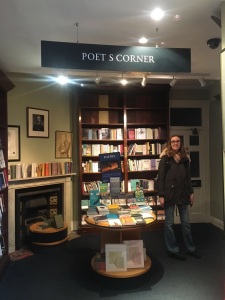 Some of you may be surprised to know that when I initially explored study abroad programs, I was considering a program at Oxford. The city has been an enchanting place in my imagination for years, especially because some of my favorite authors and thinkers have studied there, at the oldest university in the English speaking world. Dating back to the 11th or 12th century, Oxford has been a place that has inspired a range of people, from Christopher Wren and Dorothy Sayers to John Henry Newman and Stephen Hawking.
Some of you may be surprised to know that when I initially explored study abroad programs, I was considering a program at Oxford. The city has been an enchanting place in my imagination for years, especially because some of my favorite authors and thinkers have studied there, at the oldest university in the English speaking world. Dating back to the 11th or 12th century, Oxford has been a place that has inspired a range of people, from Christopher Wren and Dorothy Sayers to John Henry Newman and Stephen Hawking.
To study at such a prestigious institution would obviously be a huge honor. But it was ultimately an honor I chose not to pursue.
The likelihood of my getting into the program was very high, but the more I considered it, the more I realized that such a program was not for me. I am not interested in a future as an academic, for one thing. As someone who has recently struggled with essay anxiety, too, applying for a course of study in which I would have to write major essays on a weekly basis did not seem like the wisest choice.
Talking with an incredible student at my home university who had just completed (and loved) his experience only confirmed my conviction that I would not be happy in such a program. Instead, I chose a London University that has been less academically rigorous. It has given me more time to travel, apply to grad school, and enjoy my final semester.
It was hard and humbling to walk away from the opportunity to study at Oxford. A part of me felt that by doing so, I would be admitting that I wasn’t good enough or smart enough or brave enough. Not enough.
Despite these fears, another part of me knew that I would probably cry every day there, and that an opportunity that may be fantastic for some people might not be fantastic for me at this moment. Living up to an ideal or outside expectation to “be smart” would stress me out to an unhealthy extent, not make me happy. I’m very glad I made the choice I did.
That being said, I had to go visit the enchanting city while I was in the UK, and I enjoyed my visit just as much as I thought I would. Technically, I took two trips to Oxford—but the first one did little more than orient me in the city, so I felt justified in a second adventure.
For the second trip, my flatmate and I caught the Oxford Tube early the Saturday before Easter and began by browsing Blackwell’s Bookshop. Where else?
We then explored the stalls in the Covered Market, which was established in 1774.
And of course, we had to visit one of the 38 colleges that make up the university. We happened by New College and decided that one would be as good as any other. Plus, my flatmate was excited that some scenes from the Harry Potter movies had been filmed there.
We took a gander at the Museum of the History of Science solely to see a blackboard that Einstein wrote on. We followed our foray into science with afternoon tea and two giant scones in the place of lunch.
I next had to stop by the Oxford Oratory Church of St Aloysius Gonzaga, which I may have chosen because Gerard Manley Hopkins served there and because it shares a name with Sebastian’s teddy bear. Along the way, we passed by the Bird and Baby, where the Inklings met to drink and discuss their writing. A selfie-taking session ensued.
I then dragged my flatmate to Holywell Cemetery to find the graves of Austin Farrer (a theologian and Inkling) and Kenneth Grahame (the author of The Wind in the Willows). Props to her for standing in the rain in a graveyard (that may or may not have been open) for a good 15 minutes.
We of course had to finish with a tour of the Divinity School and the Bodleian Library. The architecture inside the Divinity School is simply stunning…
And I’m pretty sure I grinned like a Muppet the entire time we were in Duke Humphrey’s Library, which is the oldest reading room at the University and is filled with texts that are at least 400 years old.
We wrapped up the day with my first Thai food experience (yum!) and a split Cadbury Crème Egg McFlurry, along with a conversation with some of Jenna’s friends who are currently studying at Oxford.
As I talked to the students and reflected on my magical day, I felt very thankful that I had been blessed with the opportunity to visit the place of my dreams, if only for a little while. I realized that the great thinkers of Oxford will continue to inspire me at a distance, and for once, that felt like it would be enough.
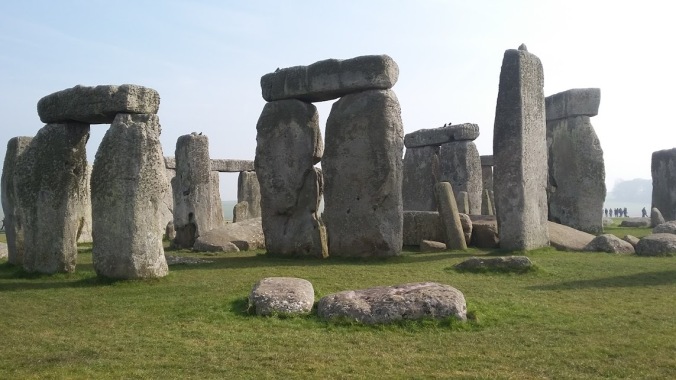








 “To one who has been long in city pent,
“To one who has been long in city pent,

 Basking in the sun and blue skies as I hiked along the White Cliffs revitalized me and cheered my spirit. I felt I could soak up the fresh air and lovely landscape forever. I began thinking about Dorothy Day, who in
Basking in the sun and blue skies as I hiked along the White Cliffs revitalized me and cheered my spirit. I felt I could soak up the fresh air and lovely landscape forever. I began thinking about Dorothy Day, who in 




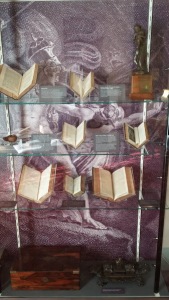


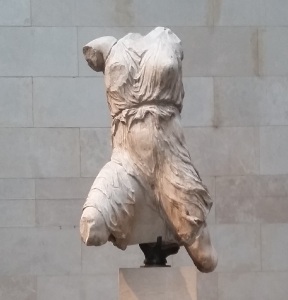
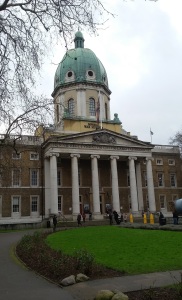

 Westminster Abbey has probably been my favorite of the places I’ve visited so far. After catching a glimpse of the exterior during a bus tour, I knew I had to see the inside. To do so, I may have spent more on admission than I did on food that week, but it was worth it.
Westminster Abbey has probably been my favorite of the places I’ve visited so far. After catching a glimpse of the exterior during a bus tour, I knew I had to see the inside. To do so, I may have spent more on admission than I did on food that week, but it was worth it.




